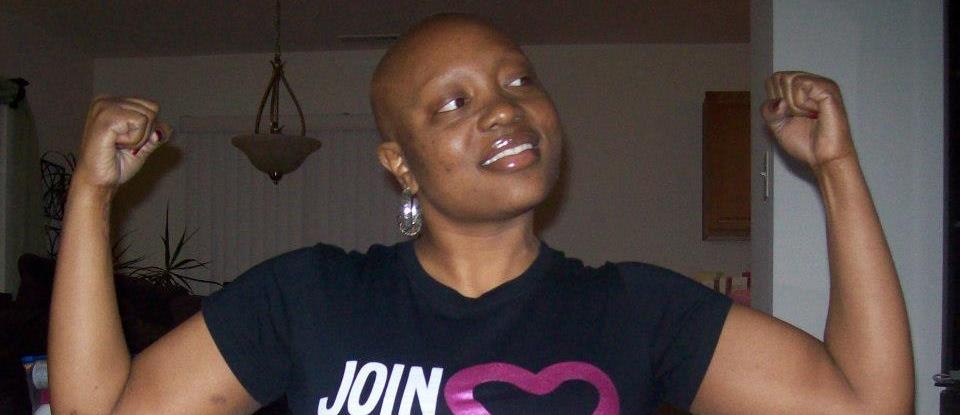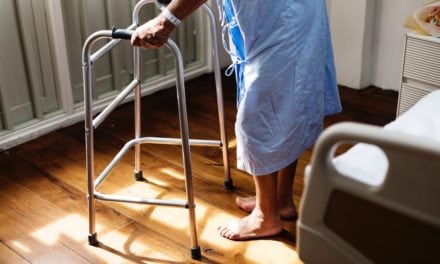Rhonda Hall’s long journey back to good health began with an unwelcome surprise. “A few years ago, I went down to North Carolina to attend a family celebration,” says Hall, a special education teacher who lives in Springfield, Mass. I was feeling just fine before and during the trip, but towards the end both of my ankles began to swell. They became so large that I had to see a doctor.”
Tests revealed that Hall’s thyroid was barely functioning. What followed was an odyssey of poor medical advice, increasing health problems and a long battle to conquer her weight.
“I gained 60 pounds when my thyroid stopped functioning,” says Hall, who would eventually reach 260 pounds at 5 feet 3 inches tall. “But the doctor just told me that pills would fix my thyroid, and I would be fine.”
Over the next nine months, it became clear that Hall was anything but “fine.”
“I began experiencing all types of symptoms. I could not stop running to the bathroom. My tongue was swollen at one point, and I was exhausted all the time.”
Finally, one afternoon, Hall’s mom insisted she get a second opinion. “I was feeling particularly bad that day, so I went to the local urgent-care clinic. That’s when I learned that my blood sugar was over 500 and that I had developed diabetes.”
Hall’s blood sugar was so out of control that she was put on a regimen of four shots of insulin a day. She was also placed on medication for hypertension and high cholesterol. She was 35.
“I felt a little bit better on the medication,” Hall says, her voice filled with frustration as she recalls how stressed she was at the time. “But I was always tired. I’m a single mom, so I was raising my son John. I was working and in school full time trying to finish a degree program.”
The other overwhelming issue was the cost of her care. “Even with good health insurance, I was spending nearly $500 every few weeks for blood-sugar test strips and medication.”
Taking Off the Weight
“I was well on my way to a heart attack at that point,” Hall says, “but the doctors only made passing references to my weight. I had no idea how serious it was, and they didn’t tell me.”
Hall’s “aha moment” came when she began volunteering at church-based health fairs and sharing Go Red for Women materials from the American Heart Association with other women to teach them about heart disease.
“I tried Weight Watchers, but it was not working for me,” Hall recalls. “I did not really get what ‘morbid obesity’ meant, in terms of heart disease risk, until I started helping other people. It made me look at my own cholesterol, my weight and my hypertension. I finally got it. I realized I really had to drop the weight.”
At that point, Hall, who is an evangelist at her church, Deliverance Center Ministries in Indian Orchard, Mass., had been struggling for nearly six years to bring her weight down, but this time she was determined. “I asked God to help me, and me and God worked it out,” she says.
Hall began with an 11-day fast of almond milk, and water, fruit and vegetable juices. Then she joined a group at her school that was following The Biggest Loser at Home Program.
“I started getting up at 5 a.m. every day to go to the gym,” she says. “My sister and a friend from my church would come along. I also went back to Weight Watchers, but this time I was successful.”
Hall dropped 60 pounds in three months. Her progress was slowed by a car accident that made it impossible for her to work out, but she stuck with it. “It took me a year to lose 100 pounds.”
Get Fit, Not Skinny

BEFORE: Rhonda Hall, above, was 260 pounds at 5 feet 3 inches tall. AFTER: At 43 and 100 pounds lighter, Hall is fit for the first time in her life. “I started getting up at 5 a.m. every day to go to the gym,” she says.
Hall’s weight loss dramatically lowered her heart disease risk, made it possible for her to stop taking all of her diabetes medications and cut the dosage of her hypertension and cholesterol medications by half. But there’s more to her miraculous health makeover than dropping dress sizes. At 43, for the first time in her life, Hall is fit.
Maintaining a healthy weight, while focusing on becoming fit is the key to longevity and lowered disease risk, explains Carl J. Lavie, Ph.D., author of the upcoming book The Obesity Paradox. And that healthy weight may mean curvy, not thin, for many black women. Recent research that looks at body composition and culture shows that black women can be healthy and fit, while voluptuous and shapely.
Morbid obesity, measured as a body mass index (BMI) over 35, is of great harm to health. If you are below that number, Lavie advises, “your goal should be to become metabolically healthy. You can be overweight, according to current BMI and weight charts, and still be healthy if you have good glucose levels, good cholesterol, no hypertension and no diabetes. It is fitness that is extremely important.”
Lavie’s work helps to explain a 2011 study that found black women better able to maintain health at a higher weight. Using pounds, rather than BMI, the disease-to-risk/weight relationship looks like this: A woman who is 5 feet 5 inches tall has an increased risk of heart disease, diabetes and other health problems at 180 pounds if she were white. Her disease risks would not increase until she reached 198 pounds if she were black (a BMI of 33). These differences do not exist between black and white men.
The way a woman carries her weight is also a factor. “Obesity in the gut is much worse than fat that is primarily in your hips and thighs,” Lavie says. Your waistline should be 35 inches or smaller for optimum health. But he emphasizes that you cannot be fit or healthy if you are morbidly obese.
“The unfit have the highest health risks,” Lavie adds. He recommends that everyone follow the current federal fitness guidelines and get at least 150 minutes of moderate to vigorous exercise a week, or 75 minutes of intense physical activity, and avoid being sedentary.
Knowledge is Power
Hall has now maintained her 100-pound weight loss for a little more than a year. To other black women she says: “Sometimes we have to be open to learning what we need for our health. We need to know that it’s not OK to be ‘big,’ if that means you’re morbidly obese. We have to teach each other that having ‘sugar,’ is not normal. It means you have diabetes, and you have to address it. When it comes to heart disease, the American Heart Association gives you the prescription you need to stay healthy. All you have to do is follow it.”
Sheree Crute is editor-in-chief of FierceforBlackWomen.com.
? To lower your heart disease risk, read: “10 Tips for a Heart-Healthy Life”
? To learn more, click Go Red for Women
Tell us about your transformation!
We want to share the story of your successful battle with weight or how you’ve overcome another difficult health issue. Your personal triumphs can inspire women everywhere. Please contact us at info@fierceforbw.com. Thanks!








